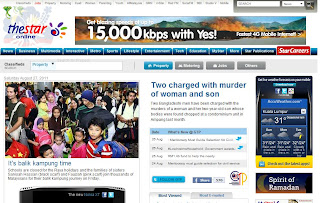Kony2012: once information goes viral, there's no stopping it.
Social networking has become one of the most popular reasons to
connect to the Internet these days. Social media, particularly allowed users to
take pictures and videos of the event and it is a very effective avenue for
doing this. To this point, social networking sites are getting more publicity
and its popularity is vigorously increasing. It is mainly due to this world
full of people energetically spread news and the strong persuasion bond between
one another. Personally, I think social networking sites are a very good way to
connect people. According to Hughes (2008), "this unwieldy frontier for
disaster activity as a matter of social convergence parallels geographical
on-site behavior".

This video shows the dreadful devastation the army
of child soldiers that turned slaves in Ugandan. It is a video that took
roughly 30-minute-long, titled with ‘Invisible Children’. This video goes
massively viral online with 14.4m views on Vimeo and more than 49m on YouTube
at the time of writing in just a few days, which attracted a lot of attention
from publics. The tool to spread the video is via Facebook and Twitter, where suddenly
makes it a top trending topic. However, this video also received a lot of critics,
arguments and feedbacks from people who
is concerned on this topic throughout the Internet. Interactivity and immediacy
is the primary element that differentiates what social media and traditional
media are. Users frequently browsing the Internet are inclined to rather trust
unreliable news than proven facts.
In this
article, the author mentioned that there is an article by Craig Silverman on
Poynter pointed out that ‘misinformation spread faster and farther than the
corrections, especially on social media. It’s what he calls “the law of
incorrect tweets”, which says that “Initial, inaccurate information will be
retweeted more than any subsequent correction.” According to Pring
(2012) research stating that social networking is still the fastest-growing
active social media behavious online, increasing from 36% of global internet
users to 59% managing their profile on a monthly basis by the end of 2011.
(340 words)
References:
Hughes, A, Palen, L., Sutton, J., Liu, S., & Vieweg, S.
(2008). “Site-seeing” in disaster: An examination of on-line social
convergence. In Conference Proceedings of the 5th International ISCRAM
Conference, Washington, DC.











